Gone are the days of having to clean pools by hand, as robot pool cleaners have revolutionized pool maintenance. These smart devices provide a hands-free way to keep your pool clean, freeing up your time and effort. So how does a pool cleaning robot work most effectively? Let’s explore the details in the article below.
Robotic Pool Cleaners: A Comprehensive Guide
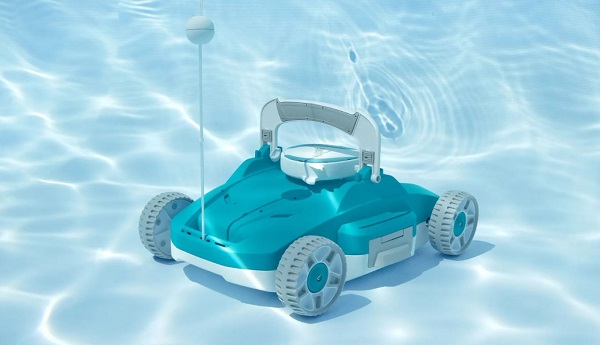
Definition and Types of Robotic Pool Cleaners
Robotic pool cleaners are automated devices designed to clean the surfaces of swimming pools, including the floor, walls, and waterline. They operate independently of the pool’s filtration system and are powered by electricity.
Types of Robotic Pool Cleaners
1. Suction-Side Robotic Cleaners:
- Connect to the pool’s suction line.
- Use the pool’s filtration system to move and collect debris.
- Suitable for small to medium debris.
2. Pressure-Side Robotic Cleaners:
- Connect to the return side of the pool’s circulation system.
- Often require a booster pump for extra power.
- Ideal for larger debris like leaves and twigs.
3. Fully automated robotic cleaners:
- Operate independently using an onboard motor and filter system.
- Plug into an electrical outlet.
- Feature advanced navigation and programming options.
The technology behind robotic pool cleaners
Robotic pool cleaners utilize a combination of technologies for navigation, cleaning, and operation:
Motor and Power Supply: Equipped with electric motors that drive the wheels and the suction system. Powered by a low-voltage power supply unit connected to a standard outlet.
Navigation and Mapping: Utilize sensors and microprocessors for efficient navigation. Some models feature advanced algorithms and gyroscopic technology to map the pool’s layout and optimize cleaning paths.
Filtration System: Built-in filter cartridges or bags that trap debris and particles. Filters vary in mesh size to handle different types of debris, from fine sand to large leaves.
Cleaning Mechanisms: Brushes and scrubbers that dislodge dirt and algae from surfaces. Some models feature rotating brushes or oscillating scrubbers for thorough cleaning.
User Interface and Controls: Remote controls or mobile apps for easy operation. Programmable cleaning cycles and schedules.
Benefits of Using Robotic Pool Cleaners Over Traditional Methods
Efficiency and Effectiveness: Provide thorough cleaning, reaching all areas of the pool, including corners and steps. Operate independently, allowing for multitasking.
Energy and Cost Savings: Use less energy compared to traditional pump-driven cleaners. Reduce wear and tear on the pool’s filtration system, extending its lifespan.
Convenience: Easy to use and maintain, with simple setup and operation. Require minimal supervision once programmed.
Improved Water Quality: Enhance circulation and filtration by moving water while cleaning. Reduce chemical usage by efficiently removing debris and algae.
Key Features to Look for in a Robotic Pool Cleaner
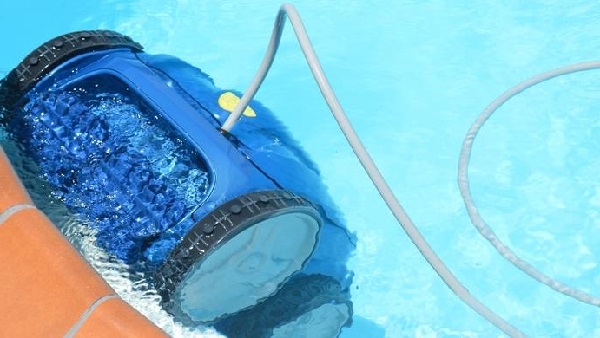
Pool size and shape: Choose a cleaner with sufficient coverage area for your pool size and shape.
Cleaning patterns: Consider random or systematic patterns based on your budget and desired cleaning efficiency.
Wall climbing ability: If your pool has vertical walls, ensure the cleaner can climb and clean them effectively.
Filter capacity and cleaning: Look for a model with a filter size appropriate for your pool’s debris load and ease of cleaning the filter.
Connectivity features: Consider features like smartphone app control or remote control for added convenience.
Warranty: Pay attention to the warranty offered, as it reflects the manufacturer’s confidence in the product’s quality.
Robotic Pool Cleaner: Price Range and Brand Breakdown
Robotic pool cleaners offer a convenient and efficient way to keep your pool clean, but their prices can vary significantly.
Price Range:
- Budget-friendly ($300–$700): This range includes basic robotic cleaners with random cleaning patterns, suitable for smaller pools or those with less complex shapes. These models might have good wall-climbing abilities but may lack advanced features like app connectivity or systematic cleaning.
- Mid-range ($700–$1500): This category offers a wider range of features, including systematic cleaning patterns for improved efficiency, better wall-climbing capabilities, and larger filter capacities to handle more debris. Some models in this range might have smartphone app connectivity for remote control or scheduling.
- High-end ($1500+): High-end robotic cleaners boast top-of-the-line features like advanced navigation systems for complex pool shapes, superior wall-climbing abilities, extra-large filter capacities for heavily debris-laden pools, Wi-Fi connectivity for smartphone app control, and advanced scheduling options.
Popular Brands and Considerations:
| Brand | Price Range | Key Considerations |
| Dolphin (Maytronics) | $300-$2,000+ | Offers a wide range of models across all price points. Known for reliability and good value. |
| Polaris | $500-$1500+ | Offers pressure-side and robotic cleaners. Robotic models are known for good navigation and wall climbing. |
| Aiper | $300-$1000 | Budget-friendly option with good features for smaller pools. |
| Aquabot | $500-$1500 | Offers various models with features like Bluetooth connectivity and good wall climbing. |
| iRobot (AquaVac) | $1000-$2000+ | Renowned for advanced navigation systems and app control features. |
| Zodiac | $1000-$2000+ | Offers high-end models with superior features for complex pool shapes. |
| Pentair (Kreepy Krauly) | $1500+ | High-end brand known for powerful cleaning and long lifespans. |
Unveiling the Secrets: How Robotic Pool Cleaners Work
Robotic pool cleaners have become a popular choice for keeping pools sparkling clean with minimal effort. But how exactly do these autonomous machines navigate your pool and leave it spotless?
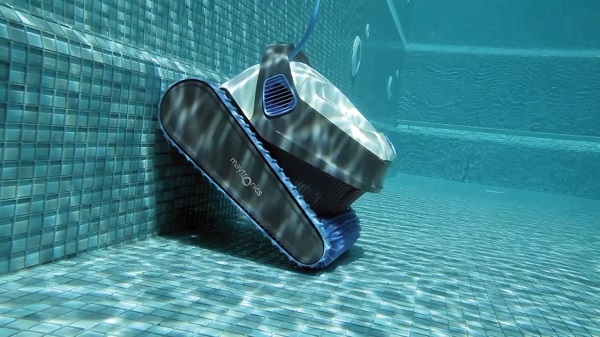
The Basic Mechanics of How These Cleaners Operate Autonomously
Power Supply and Motor: Robotic pool cleaners are powered by a low-voltage transformer that connects to a standard electrical outlet. The transformer reduces the voltage to a safe level for underwater use and provides a steady power supply to the cleaner.
Movement: The cleaner uses electric motors to drive wheels or tracks, allowing it to move across the pool’s surfaces. Motors also power the brushes and suction mechanism to collect debris and clean the surfaces.
Suction and Filtration: Water is drawn into the cleaner through intake ports, where debris is captured in an internal filter bag or cartridge. Clean water is expelled back into the pool, enhancing water circulation.
Navigation and Mapping Technologies for Efficient Pool Coverage
Sensors and Algorithms: Robotic pool cleaners are equipped with various sensors, including gyroscopes, accelerometers, and sometimes cameras. These sensors help the cleaner detect walls, steps, and other obstacles, allowing it to navigate efficiently.
Mapping Technology: Advanced models use algorithms to map the pool’s layout, ensuring systematic coverage without unnecessary overlap. Some cleaners can learn the shape and size of the pool, optimizing their cleaning path over time.
Random and Smart Navigation: Basic models use random navigation patterns, which can still be effective but may take longer to clean thoroughly. Smart navigation models use pre-programmed patterns or dynamic mapping for more efficient and faster cleaning.
A Detailed Look at the Cleaning Cycle: From Start to Finish
Initial Setup: Plug the power supply into an outlet and connect it to the cleaner. Place the cleaner in the pool and turn it on.
Start-Up Phase: The cleaner begins by performing an initial scan of the pool to determine its dimensions and identify obstacles.
Active Cleaning: The cleaner moves systematically across the pool floor, walls, and waterline. Brushes scrub surfaces to dislodge dirt and algae, while the suction mechanism collects debris. Some models have separate cleaning modes for different parts of the pool (e.g., floor-only, wall-only).
Completion: Once the cleaning cycle is complete, the cleaner will automatically shut off or return to a designated spot for easy retrieval.
Post-Cleaning: Remove the cleaner from the pool, empty it, and rinse the filter bag or cartridge. Inspect the cleaner for any visible damage or wear, and store it properly.
Energy Efficiency and Power Consumption
Low Voltage Operation: Robotic pool cleaners operate on low voltage, typically around 24 volts, making them energy-efficient compared to traditional pool cleaning systems.
Power Consumption: Average power consumption ranges from 100 to 200 watts per hour. Depending on the model and cleaning cycle duration, operating costs can be as low as a few cents per hour.
Energy Savings: Efficient cleaning reduces the need for extended operation times. Advanced navigation and smart sensors further optimize energy use by minimizing overlap and missed spots.
Tips on Keeping the Cleaner in Optimal Condition and Expected Lifespan
Filter Maintenance: Clean or replace filters as needed to maintain optimal suction and filtration. A clean filter ensures efficient operation and prolongs the life of the motor.
Brush Care: Replace worn brushes to maintain effective scrubbing performance. Different pool surfaces may wear brushes at different rates, so inspect them regularly.
Cord Management: Ensure the power cord is free from tangles and kinks, which can affect movement and navigation. Some models come with swivel cords to prevent tangling.
Software Updates: For models with updatable firmware, check for updates that may improve performance or add new features.
Professional Servicing: Consider annual professional servicing to ensure all components are in good working order and to address any issues before they become serious problems.
Expected Lifespan: With proper maintenance, a high-quality robotic pool cleaner can last between 3 and 5 years, and sometimes longer. Regular maintenance and timely replacement of consumable parts can extend the lifespan further.
Effectiveness of Robotic Pool Cleaners: A Deep Dive
Robotic pool cleaners have revolutionized pool maintenance, but how effective are they in various scenarios? Here’s a breakdown of their performance on different pool types, debris sizes, water chemistry, and a comparison to traditional cleaning methods.
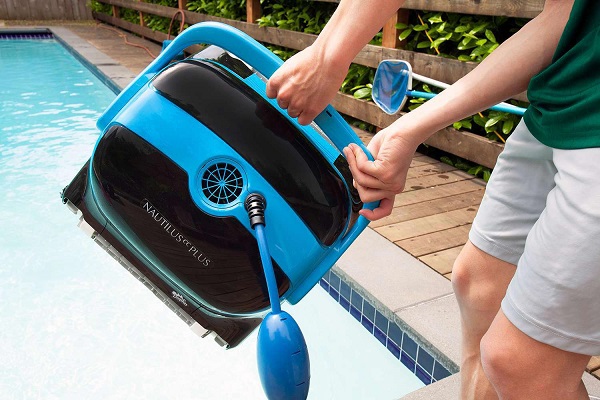
Adaptability to Different Pool Types
1. Pool Shapes and Sizes:
Rectangular Pools: Most robotic cleaners efficiently handle rectangular pools due to their straightforward navigation paths.
Freeform Pools: Advanced models with smart navigation systems are better suited for irregularly shaped or freeform pools. They map the pool and adapt their cleaning paths to ensure comprehensive coverage.
Small vs. Large Pools: Robotic cleaners come in various models designed for different pool sizes. It’s important to choose a model rated for your pool’s dimensions to ensure optimal performance.
2. Surface Types:
Concrete/Gunite: Robust models with powerful brushes and traction can handle rough surfaces effectively.
Vinyl: Models with gentle, non-abrasive brushes are ideal for vinyl-lined pools to prevent damage.
Fiberglass and Tile: Versatile cleaners with adjustable scrubbing mechanisms are suitable for these surfaces, providing thorough cleaning without causing scratches or wear.
Performance on Different Types of Debris
Fine Particles: Robotic cleaners with fine mesh filters are effective at capturing fine particles like dust, pollen, and sand. Some models offer multiple filter options, allowing users to switch between fine and coarse filters depending on their cleaning needs.
Medium Debris: Leaves, twigs, and small insects are typically well-handled by most robotic pool cleaners. Standard filters can usually capture these types of debris effectively.
Large Debris: For larger debris like large leaves and acorns, models with larger intake ports and high-capacity filter bags are more suitable. Some advanced models feature oversized debris openings and heavy-duty filters to manage significant debris loads.
Impact on Water Chemistry and Clarity
Enhanced Circulation: Robotic pool cleaners enhance water circulation as they move around the pool, which helps distribute pool chemicals more evenly and can improve overall water clarity.
Debris Removal: By effectively removing debris, robotic cleaners reduce the organic load in the pool, which can help maintain balanced water chemistry and reduce the demand for chemical sanitizers.
Filtration Support: They supplement the pool’s filtration system by removing debris directly from the pool water, which can reduce the strain on the main filter system and improve water clarity.
Comparisons with Manual and Pressure/Suction Cleaners
| Factor | Robotic pool Cleaners | Manual pool cleaners | Pressure/Suction Cleaners |
| Convenience | Most convenient – operates autonomously | Least convenient – requires manual operation | Moderately convenient – automatic operation, but might require hose adjustments |
| Time Commitment | Very low – minimal supervision is required | High – requires dedicated time for cleaning | Low – automatic operation, but might require occasional intervention |
| Cleaning Coverage | Cleans floor, walls, and waterline (depending on model) | Cleans specific areas you target | Cleans floors primarily, some models might climb walls |
| Effectiveness on Debris | Good for fine particles, some models handle larger debris | It varies depending on your effort and tools. Effective on all sizes | Effective on most debris sizes, good for heavily debris-laden pools |
| Cost | Higher initial investment | Low – requires the purchase of basic cleaning tools | Moderate – initial cost of cleaner, ongoing cost for filter bags/cartridges |
| Maintenance | Moderate – requires emptying filters and occasional brush replacements | Low – basic cleaning of tools | Moderate – emptying debris canisters, occasional hose checks |
| Suitability for Pool Types | Works well for most in-ground pools, some above-ground pools (check compatibility) | It works for all pool types | It works well for all pool types |
| Learning Curve | Low – minimal setup required | Low – relatively easy to use | Low – fairly straightforward operation |
Real User Experiences and Expert Opinions
1. User Reviews:
Many users report high satisfaction with the convenience and performance of robotic pool cleaners. Common praises include ease of use, thorough cleaning, and the ability to set and forget.
Some criticisms may include the initial cost and the need for periodic maintenance, such as cleaning filters and brushes.
2. Expert Opinions:
Pool maintenance experts often recommend robotic cleaners for their advanced technology and efficiency. They highlight the long-term cost savings in energy and maintenance compared to traditional methods.
Experts also point out that, while the upfront cost may be higher, the reduced labor and maintenance costs, along with improved water quality, justify the investment.
3. Performance Studies:
Studies and tests by consumer organizations often rate robotic pool cleaners highly for their cleaning performance, energy efficiency, and user-friendly features.
They are frequently recommended as the best option for pool owners seeking low-maintenance, high-efficiency cleaning solutions.
Installation and Setup of Robotic Pool Cleaners
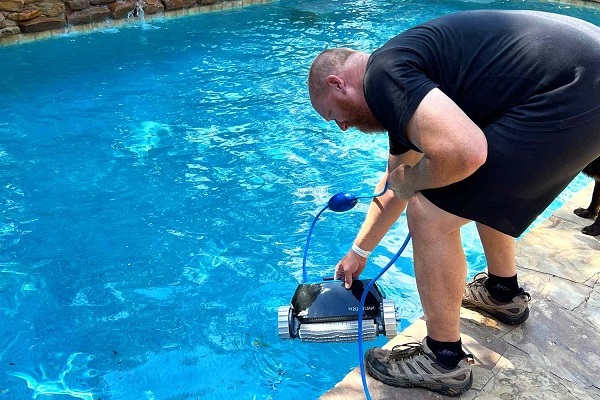
Initial Setup and Installation Requirements
Unboxing and Inspection: Unbox the robotic pool cleaner and inspect all components for any damage or missing parts. Typical contents include the cleaner unit, power supply, control unit, and various accessories (e.g., brushes, filters).
Assembling the cleaner: Follow the manufacturer’s instructions to assemble any necessary parts, such as brushes or filters. Ensure all components are securely attached and properly aligned.
Positioning the Power Supply: Place the power supply unit within reach of an electrical outlet, ensuring it is at least 10-15 feet away from the pool to prevent accidental splashing. Avoid placing the power supply in direct sunlight or areas prone to water exposure.
Connecting the Cleaner: Connect the floating cable from the robotic cleaner to the power supply unit. Ensure the connection is secure and waterproof. Plug the power supply unit into a grounded electrical outlet.
Submerging the Cleaner: Submerge the cleaner in the pool and gently shake it to release any trapped air bubbles, ensuring it sinks to the bottom.
Programming and Customization Options for Different Pools
Basic Programming: Turn on the power supply and use the control unit to start the cleaner. Most models have a simple start/stop button for basic operation. Select the desired cleaning mode if available (e.g., floor only, walls and floor, waterline).
Advanced Customization: For advanced models, use the control panel or a mobile app to set custom cleaning schedules, modes, and durations. Program the cleaner to operate at specific times or days, adjusting the frequency based on pool usage and debris levels.
Adjusting Cleaning Settings: Customize settings such as cleaning intensity, brush speed, and filter type according to the pool’s condition and type of debris. Some models allow you to adjust navigation patterns or focus on specific pool areas.
Compatibility with Various Pool Systems
Surface Compatibility: Verify that the cleaner is suitable for your pool’s surface material (e.g., concrete, vinyl, fiberglass, or tile). Check the manufacturer’s specifications for compatibility.
Shape and Size: Ensure the cleaner is rated for the size and shape of your pool. Some models are designed for larger or more complex pool layouts and may offer better performance in those settings.
Filtration Systems: Robotic cleaners operate independently of the pool’s main filtration system, making them compatible with all types of pool filtration setups (sand, cartridge, and DE filters).
Safety Features and Precautions
Electrical Safety: Ensure the power supply unit is plugged into a properly grounded GFCI (ground fault circuit interrupter) outlet to prevent electrical hazards. Keep the power supply and control unit dry and away from the pool edge to avoid water exposure.
Operation Safety: Do not operate the cleaner while people are swimming in the pool. Always disconnect the power supply before removing the cleaner from the pool or performing any maintenance.
Handling and Storage: Handle the cleaner by its designated carrying handle to avoid damage to the unit or the cable. Store the cleaner in a cool, dry place away from direct sunlight and harsh chemicals when not in use.
Troubleshooting common setup issues
1. Cleaner Does Not Start:
- Check the power supply connection and ensure it is plugged into a working outlet.
- Verify that the floating cable is securely connected to the cleaner and the power supply unit.
- Reset the power supply unit by turning it off and on again.
2. Poor Navigation or Stuck Cleaner:
- Inspect the cleaner’s brushes and wheels for debris or obstructions that may hinder movement.
- Ensure the pool water level is adequate for the cleaner to operate correctly.
- Check for and remove any large obstacles in the pool that could impede the cleaner’s path.
3. Inadequate Cleaning Performance:
- Clean or replace the filter bag or cartridge to ensure proper suction and debris collection.
- Verify that the brushes are in good condition and not worn out.
- Adjust the cleaning settings or mode for better performance.
4. Error Messages or Indicators:
- Refer to the user manual for specific error codes or indicator lights.
- Follow the troubleshooting steps provided by the manufacturer to resolve the issue.
Maintenance and Care of Robotic Pool Cleaners
Robotic pool cleaners are a valuable investment for keeping your pool sparkling clean. But like any machine, they require proper maintenance to function optimally.
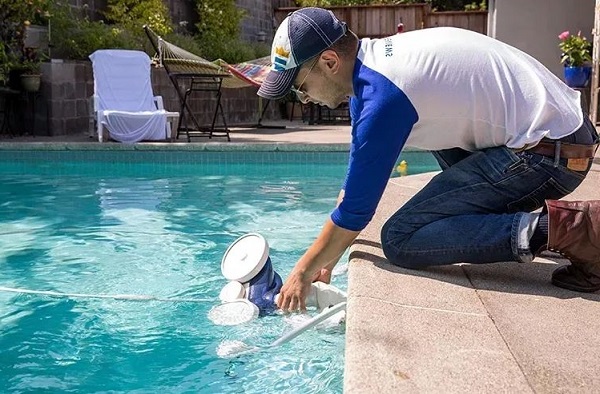
Best Practices for Cleaning and Storing Robotic Pool Cleaners
1. Regular Cleaning:
- After each use: Remove the cleaner from the pool and empty the filter bag or cartridge. Rinse it thoroughly with a hose to remove debris and fine particles.
- Brushes and Tracks: Clean the brushes and tracks to remove any accumulated dirt, algae, or debris. Inspect for any wear and tear and replace them as needed.
- Intake Ports: Check the intake ports and remove any blockages to ensure efficient suction.
2. Periodic deep cleaning:
- Body and Exterior: Wipe down the cleaner’s exterior with a soft cloth and mild detergent to remove any chemical residue or buildup.
- Internal Components: Periodically open the cleaner (if the model allows) to clean internal components and check for any signs of wear or damage.
3. Proper Storage:
- Drying: Allow the cleaner to dry completely before storing to prevent mold and mildew growth.
- Safe Storage Location: Store the cleaner in a cool, dry place away from direct sunlight and harsh chemicals. Use a dedicated storage caddy or cart, if available, to keep the unit and its cables organized and untangled.
Tips on Addressing Frequent Issues
1. Loss of Suction:
- Clogged Filters: Clean or replace the filter bag or cartridge. Check for and remove any debris blocking the intake ports.
- Motor Issues: If cleaning the filters doesn’t resolve the issue, inspect the motor and impellers for any obstructions or damage.
2. Navigation Problems:
- Debris in Tracks or Wheels: Remove any debris from the tracks or wheels that might be impeding movement.
- Sensor Issues: Clean the sensors to ensure they are free of dirt and debris that might affect navigation.
3. Power Issues:
- Check Connections: Ensure all cables are securely connected and there are no visible signs of damage.
- GFCI Outlet: Make sure the cleaner is plugged into a properly functioning GFCI outlet. Reset the outlet if necessary.
4. Error Messages:
- Reference Manual: Consult the user manual for specific error codes and follow the recommended troubleshooting steps.
- Contact Support: If the issue persists, contact the manufacturer’s customer support for further assistance.
Understanding the Support Available from Manufacturers
1. Warranty Coverage:
Check Warranty: Review the warranty terms and conditions provided by the manufacturer. Most robotic cleaners come with a warranty that covers parts and labor for a specified period of time.
Extended Warranties: Consider purchasing an extended warranty for additional coverage.
2. Customer Support:
Technical Assistance: Contact the manufacturer’s technical support for help with troubleshooting and resolving issues.
Online Resources: Utilize online resources such as FAQs, user manuals, and instructional videos provided on the manufacturer’s website.
3. Service Centers:
Authorized Service Centers: Locate authorized service centers for repairs and maintenance services. Using authorized centers ensures that the repairs are done correctly and maintains the warranty.
Information on Obtaining Spare Parts and Upgrades
1. Manufacturer’s Website:
Parts Catalog: Visit the manufacturer’s website to find a catalog of spare parts and accessories. Most manufacturers offer direct sales of replacement parts.
Upgrades: Look for available upgrades such as advanced filters, enhanced brushes, or upgraded control units that can improve the performance of your cleaner.
2. Authorized Dealers:
Purchase Locations: Obtain spare parts and upgrades from authorized dealers to ensure compatibility and authenticity.
Local Pool Supply Stores: Many local pool supply stores carry parts for popular robotic cleaner brands.
3. Compatibility:
Model-Specific Parts: Ensure that any parts or upgrades are compatible with your specific model to avoid functionality issues.
When to Upgrade and What to Consider in a New Model
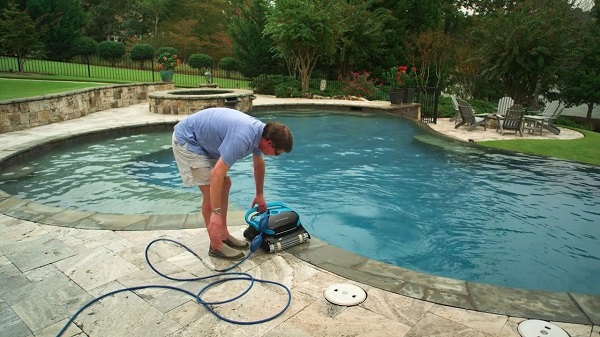
1. Signs It’s Time to Upgrade:
Frequent Repairs: If your current cleaner requires frequent repairs or is no longer reliable, it may be time to upgrade.
Outdated Technology: Advances in technology can make new models significantly more efficient and effective.
Decreased Performance: If your cleaner is not performing as well as it used to, even after maintenance, an upgrade might be necessary.
2. Considerations for a New Model:
Pool Size and Type: Ensure the new cleaner is suitable for your pool’s size, shape, and surface material.
Features and Capabilities: Look for features such as advanced navigation, multiple cleaning modes, programmable schedules, and enhanced filtration.
Energy Efficiency: Consider models with low power consumption and energy-saving features.
Ease of Maintenance: Choose a model that is easy to maintain, with accessible parts and straightforward cleaning procedures.
Budget: Balance your budget with the features you need. High-end models offer advanced features but may come at a higher cost.
Cost-Benefit Analysis of Robotic Pool Cleaners
Robotic pool cleaners offer a convenient and efficient way to maintain a clean pool, but the initial cost can be a deciding factor. Let’s delve into the cost analysis, including upfront investment, ongoing expenses, potential savings, resale value, and overall return on investment (ROI).
Initial Investment vs. Long-Term Savings
1. Initial Investment:
- Purchase Price: Robotic pool cleaners typically range from $500 to $1500, depending on the model and features.
- Installation Costs: Generally minimal, as most robotic pool cleaners are plug-and-play and require no professional installation.
2. Long-Term Savings:
- Labor Savings: Robotic cleaners significantly reduce the need for manual cleaning or hiring professional cleaning services, saving both time and money.
- Energy Efficiency: These cleaners are more energy-efficient than traditional pressure or suction-side cleaners, leading to lower electricity bills over time.
- Reduced Chemical Usage: By keeping the pool cleaner, robotic cleaners help maintain balanced water chemistry, reducing the need for chemicals.
Ongoing costs related to energy consumption and maintenance
1. Energy Consumption:
- Low Power Usage: Robotic pool cleaners typically consume between 100 and 200 watts per hour. Running the cleaner for a standard 3-hour cycle would use approximately 0.3 to 0.6 kWh.
- Cost Estimation: At an average electricity rate of $0.13 per kWh, the cost per cycle ranges from about $0.04 to $0.08, translating to around $15 to $30 annually if used three times a week.
2. Maintenance Costs:
- Replacement Parts: Periodic replacement of parts such as brushes, filter bags, and tracks may cost $50 to $100 annually.
- Routine Maintenance: Regular cleaning of the filters and unit, which can be done by the owner, incurs negligible costs.
How Robotic Cleaners Can Reduce Overall Maintenance Costs
1. Enhanced Filtration Efficiency:
- Debris Removal: By efficiently removing debris, robotic cleaners reduce the strain on the pool’s primary filtration system, extending its lifespan and reducing maintenance frequency.
- Chemical Savings: Cleaner pools require fewer chemicals to maintain balanced water chemistry, lowering the cost of pool chemicals over time.
2. Reduced wear and tear:
- Longevity of Pool Equipment: By maintaining a cleaner pool environment, robotic cleaners help reduce wear and tear on pool equipment, such as pumps and heaters, thereby extending their lifespan and reducing repair costs.
3. Decreased Need for Professional Services:
- DIY Maintenance: With a robotic cleaner, pool owners can handle most of the cleaning tasks themselves, reducing the need for professional cleaning services.
The Resale Potential and Return on Investment of Robotic Pool Cleaners
1. Resale Value:
- Depreciation: While robotic pool cleaners do depreciate over time, high-quality models retain a significant portion of their value if well-maintained.
- Market Demand: There is a strong resale market for gently used robotic pool cleaners, particularly from well-known brands.
2. Return on Investment (ROI):
- Cost Recovery: Savings on manual cleaning labor, professional services, reduced chemical usage, and lower energy costs contribute to recovering the initial investment.
- Enhanced Pool Experience: Improved water quality and reduced maintenance time enhance the overall pool ownership experience, adding non-monetary value.
A Glimpse into the Future: Advancements in Robotic Pool Cleaner Technology

Future Developments in Robotic Pool Cleaning Technology
1. Enhanced Navigation and Mapping:
AI and Machine Learning: Future robotic pool cleaners are expected to incorporate advanced AI and machine learning algorithms to improve navigation and mapping capabilities. This will allow for more efficient and comprehensive cleaning patterns.
3D Mapping: The development of 3D mapping technology will enable cleaners to better understand the pool’s geometry, allowing for precise cleaning even in complex pool shapes.
2. Self-Diagnosis and Maintenance:
Smart Diagnostics: Integration of self-diagnosis features that can alert owners about maintenance needs or potential issues through mobile apps or notifications.
Automated Maintenance: Future models may include automated maintenance functions such as self-cleaning filters and automated brush replacements.
Remote Control and Automation Features
Enhanced App Control: Expect more sophisticated app-based features for remote control, scheduling, cleaning zone selection, and real-time performance monitoring.
Advanced AI Integration: Artificial intelligence (AI) could enable cleaners to learn pool layouts, adjust cleaning patterns for optimal coverage, and anticipate debris buildup in high-traffic areas.
Voice Control Integration: Imagine seamlessly controlling your robotic cleaner through voice commands using smart speakers.
Improvements in Energy Efficiency
1. Optimized Motor Technology:
High-Efficiency Motors: The development of high-efficiency brushless motors will reduce energy consumption while providing powerful cleaning performance.
Energy Harvesting: Future models might incorporate energy-harvesting technologies, such as solar panels, to supplement power usage and further reduce electricity costs.
2. Advanced Power Management:
Adaptive Cleaning Cycles: Robotic cleaners will use sensors to adapt cleaning cycles based on pool conditions, ensuring optimal energy use. For example, they may shorten cleaning times when the pool is relatively clean.
Low-Power Modes: Implementation of low-power modes for maintenance cleaning that use minimal energy while keeping the pool in good condition between major cleanings.
Upcoming Technologies and Future Trends
1. Swarm Robotics:
Collaborative Cleaning: Multiple smaller robotic units work together as a swarm to clean large or complex pools more efficiently. These units can communicate and coordinate to cover the entire pool without overlapping efforts.
2. Advanced Filtration Systems:
Multi-Stage Filtration: Development of advanced multi-stage filtration systems that can handle various debris sizes more effectively, from fine particles to larger leaves.
3. Eco-Friendly Designs:
- Sustainable Materials: Use of eco-friendly and biodegradable materials in the construction of robotic cleaners.
- Chemical-Free Cleaning: Innovations in cleaning technology that reduce or eliminate the need for pool chemicals, using methods like UV sterilization or natural enzyme treatments.
Compatibility with Smart Home Ecosystems
1. IoT Integration:
Smart Home Compatibility: Robotic pool cleaners will increasingly integrate with smart home ecosystems, allowing for seamless interaction with other smart devices and centralized control via smart home hubs.
Data Sharing: Sharing data with other smart devices, such as pool heaters or chemical dispensers, to optimize overall pool management. For example, a cleaner could communicate with a chemical dispenser to balance the pool’s pH after a cleaning cycle.
2. Automated Ecosystems:
Fully Automated Pools: Future pools may become fully automated ecosystems where robotic cleaners, chemical monitors, and other devices work together autonomously to maintain optimal pool conditions with minimal human intervention.
Predictive Maintenance: Smart systems that use predictive analytics to anticipate and address maintenance needs before they become issues, based on data from various smart devices in the pool ecosystem.
Conclusion
Robotic pool cleaners offer significant benefits, including efficient debris removal, reduced chemical use, and minimal maintenance. However, considerations include cost, cleaning time, and compatibility with pool types. While manual cleaning remains an option, robotic technology represents a positive evolution in pool maintenance, offering greater convenience and improved water quality.

Meet David Thomas, a seasoned professional with nearly 8 years of experience specializing in inspecting and resolving issues related to swimming pools. With his expertise and meticulous attention to detail, David ensures the safety and functionality of pools, making them a refreshing oasis for all to enjoy. Whether it’s troubleshooting equipment or maintaining water quality, David’s proficiency guarantees top-notch solutions tailored to meet every pool owner’s needs.
